If you live in a warm, sunny climate and want to grow something both exotic and rewarding, dragon fruit (pitaya) is a perfect choice. This striking tropical cactus produces stunningly bright, pink-skinned fruits with sweet, mildly tangy flesh. Even better — it’s surprisingly easy to grow at home if you give it the right conditions.
In this detailed guide, we’ll cover how to grow dragon fruit in warm areas, from choosing the right variety to planting, caring, and harvesting your own tropical treasure.
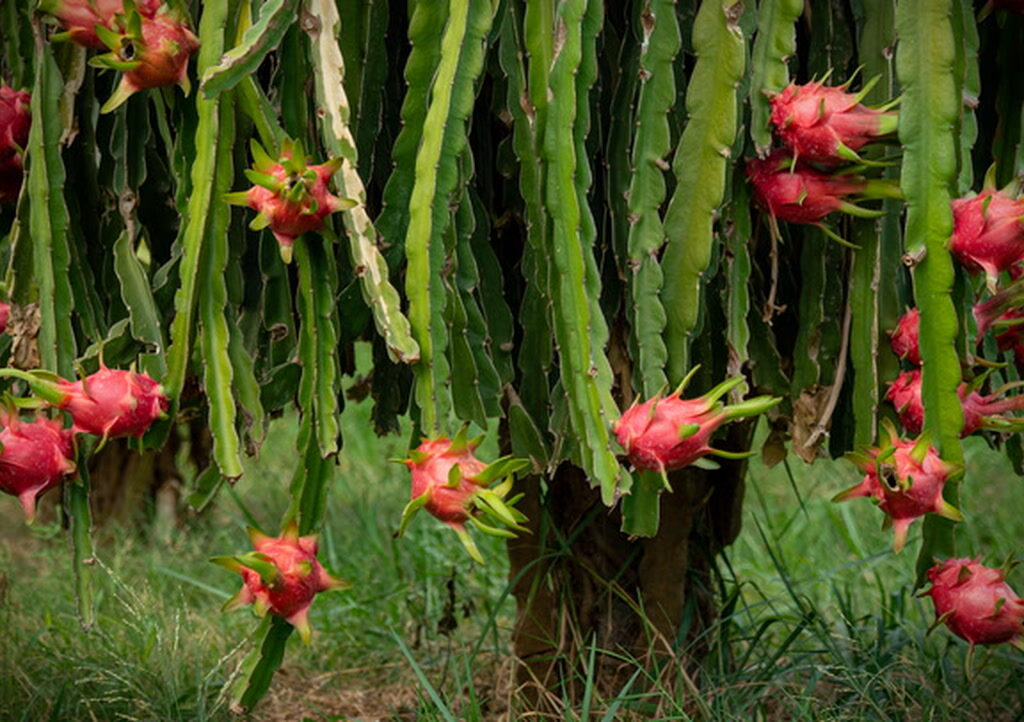
What Is Dragon Fruit?
Dragon fruit is the edible fruit of several cactus species in the Hylocereus and Selenicereus genera. Known for its vibrant pink or yellow skin, spiky appearance, and refreshing, mildly sweet pulp, it’s native to Central America but thrives in warm, arid, and tropical regions worldwide.
Popular Varieties:
- Hylocereus undatus – White flesh, pink skin
- Hylocereus costaricensis – Red flesh, pink skin
- Hylocereus megalanthus – White flesh, yellow skin
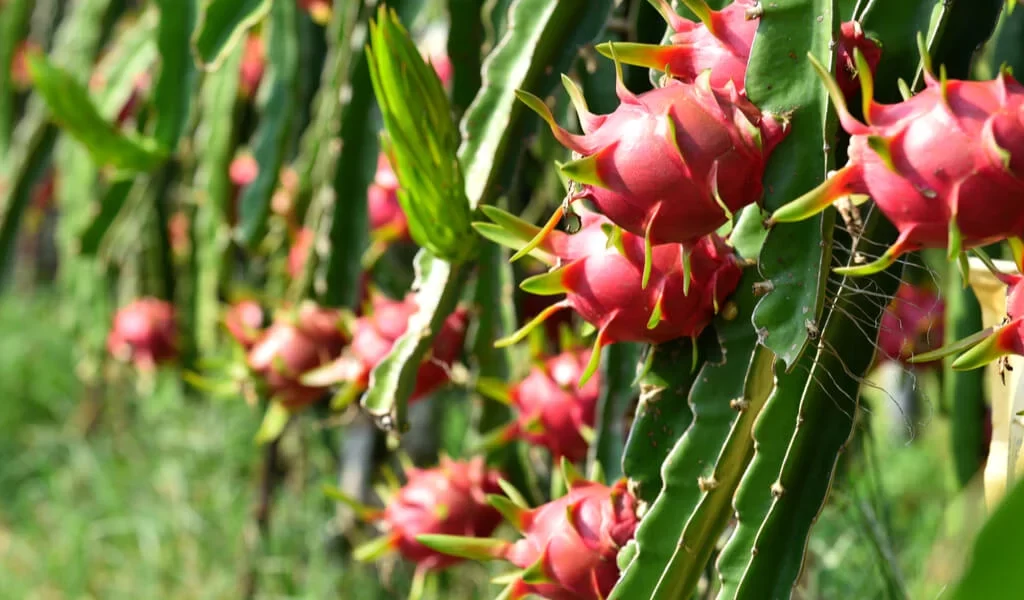
Where Does Dragon Fruit Grow Best?
Dragon fruit loves warm, sunny, and dry conditions. It’s ideal for:
- USDA Zones 9–11
- Tropical, subtropical, and arid climates
Temperature range: 65°F–85°F (18°C–29°C)
Frost sensitive: Protect or bring indoors below 40°F (4°C)
Good drainage is crucial. This cactus plant thrives in sandy or loamy soil and detests soggy roots.

When to Plant Dragon Fruit
In warm climates, the best time to plant is spring to early summer, when temperatures are consistently warm, and there’s minimal risk of frost.
Bonus: Dragon fruit is a fast-growing, climbing cactus and can start bearing fruit within 1–2 years under good care!
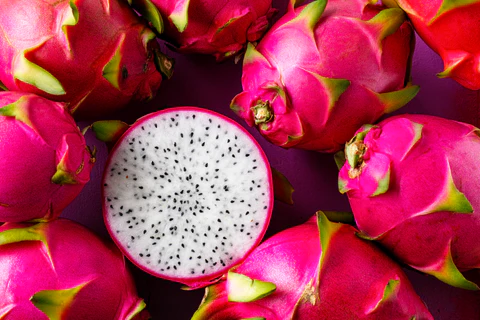
How to Start Growing Dragon Fruit
1. Choose Your Propagation Method
You can start dragon fruit from:
- Seed (slow and less reliable)
- Cuttings (faster and recommended)
Cuttings from a healthy, mature plant produce fruits quicker and more predictably.
How to make a cutting:
- Take a 12–18 inch section from a healthy, disease-free stem.
- Let the cutting dry for 1–2 days to form a callus.
- This prevents rot when planted.
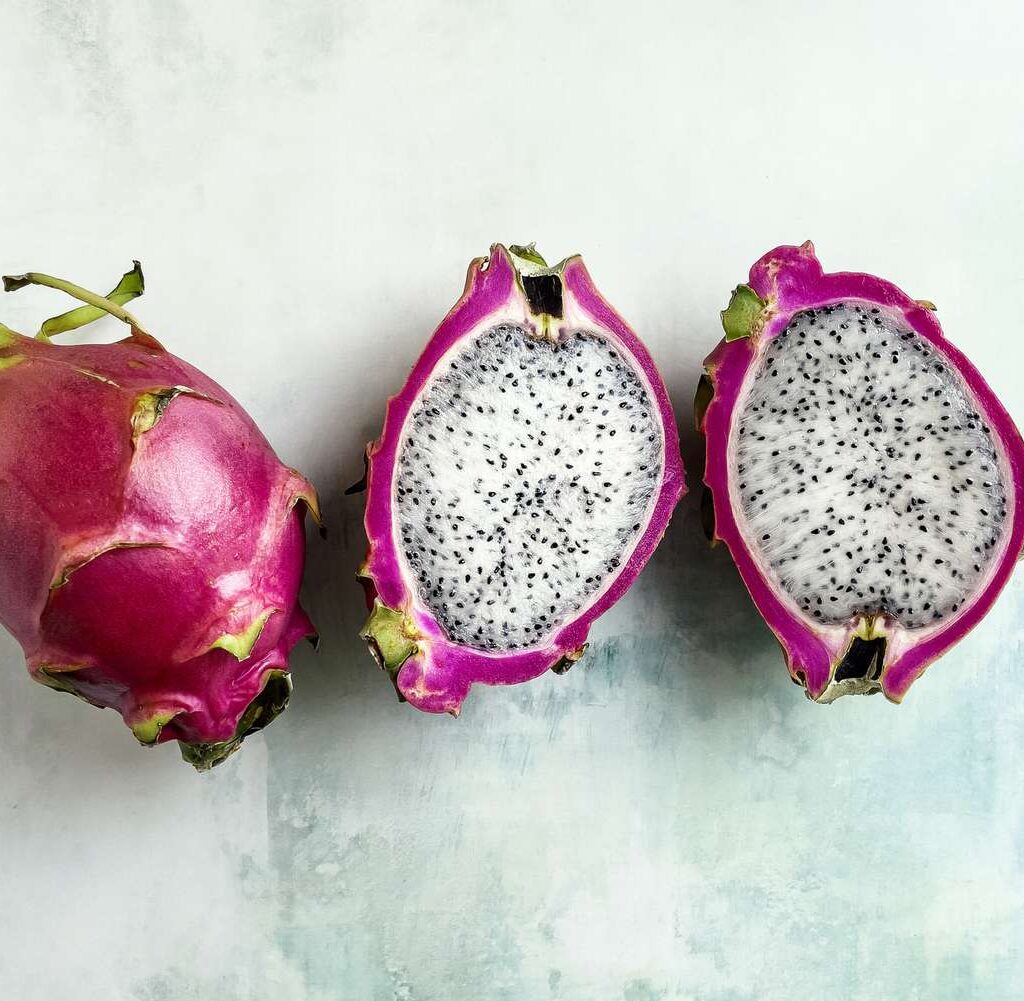
Planting Dragon Fruit
2. Choose the Right Spot
- Full sun: At least 6–8 hours daily
- Sheltered from strong winds
- Good drainage is essential. Avoid low-lying areas.
3. Prepare the Soil
Dragon fruit thrives in:
- Well-draining, sandy or loamy soil
- pH between 6–7
- Enrich with organic compost or aged manure
4. Planting in the Ground:
- Dig a hole about 2 feet deep.
- Add a handful of compost and mix.
- Place the cutting 2–3 inches deep.
- Backfill and gently firm the soil.
Provide support:
As a climbing cactus, dragon fruit needs a trellis, fence, or vertical post with cross beams for support.
Growing Dragon Fruit in Containers
Great for patios and small spaces!
Choose:
- A large, sturdy pot at least 15–20 gallons.
- Well-draining cactus soil or a mix of sandy soil, compost, and perlite.
Plant the cutting upright, with a central stake or trellis for support.
Watering and Care
Dragon fruit loves moist but not waterlogged soil.
Watering tips:
- Water deeply when the top 2 inches of soil feels dry.
- In hot weather, water 2–3 times a week.
- Reduce watering in winter.
Avoid overwatering to prevent root rot, the most common issue for this plant.
Fertilizing Dragon Fruit
For vigorous growth and juicy fruits:
- Apply a balanced, slow-release fertilizer (10-10-10) every 2 months during active growing season.
- When flower buds appear, switch to a low-nitrogen, high-phosphorus fertilizer to encourage fruiting.
Bonus tip: Organic compost or well-rotted manure improves soil health naturally.
Flowering and Pollination
Dragon fruit produces stunning, fragrant, white flowers that bloom at night — known as “moonflowers” — and last just one night.
Pollination tips:
- Some varieties are self-pollinating, but others need hand pollination.
- Use a small brush to transfer pollen from one flower to another.
- Cross-pollination between different plants often improves fruit set and size.
When and How to Harvest
Dragon fruit is typically ready to pick 30–50 days after flowering.
Signs it’s ready:
- Skin turns bright pink or yellow (depending on variety)
- Fruit yields slightly to gentle pressure
- Scales on the fruit edges start to wither
How to harvest:
- Use pruning shears or a sharp knife.
- Leave a short piece of stem attached.
Common Problems and How to Fix Them
| Problem | Cause | Solution |
|---|---|---|
| Root rot | Overwatering | Improve drainage, reduce watering |
| Stem rot | Fungal infection | Remove affected parts, treat with fungicide |
| Aphids and mealybugs | Sap-sucking pests | Use neem oil spray, rinse with water |
| Poor fruit set | Lack of pollination | Hand pollinate or plant multiple varieties |
Pruning and Maintenance
Pruning keeps your dragon fruit plant healthy, manageable, and productive.
When to prune:
- After fruiting season
How to prune: - Remove damaged, diseased, or crowded stems.
- Trim back long stems to encourage branching.
- Maintain an open structure for airflow.
Clean your tools before and after pruning to prevent disease spread.
Benefits of Homegrown Dragon Fruit
Aside from its exotic appearance and refreshing flavor, dragon fruit is a nutritional powerhouse:
- Rich in vitamin C, antioxidants, and fiber
- Boosts immunity and gut health
- Low in calories and cholesterol
- Hydrating and cooling — perfect for hot climates!
And let’s be honest — nothing beats the bragging rights of harvesting your own dragon fruit!
Final Growing Tips
- Always provide sturdy support for climbing.
- Protect young plants from harsh midday sun with partial shade cloth if necessary.
- Fertilize regularly during growing season.
- Use sandy, well-draining soil to avoid waterlogged roots.
- Harvest fruits when fully colored for best flavor.
Conclusion
Growing dragon fruit in warm areas is a fun, rewarding, and surprisingly straightforward gardening project. With the right care, you can enjoy gorgeous night-blooming flowers and a steady supply of delicious, exotic fruits straight from your backyard or patio.
Whether you’re planting it in a garden, container, or balcony, dragon fruit brings tropical charm, unique blooms, and refreshing fruit to your home landscape. Now that you know how to grow dragon fruit in warm areas, it’s time to grab a cutting and get planting — your future harvest is waiting!

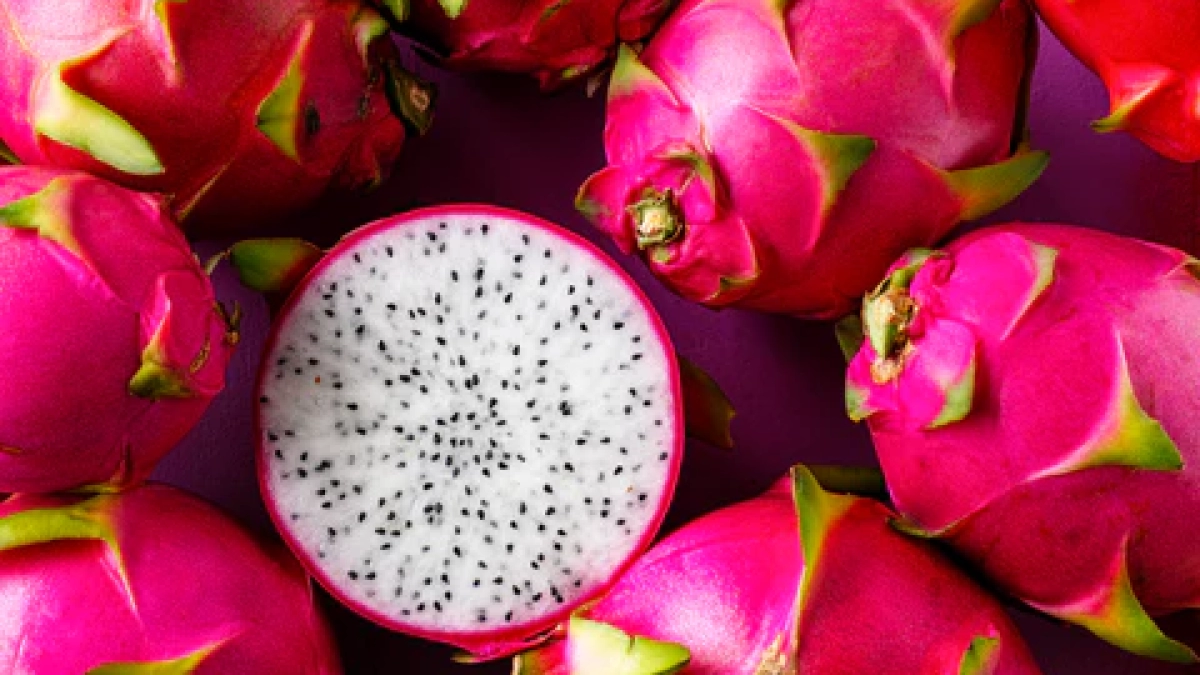




Leave A Comment